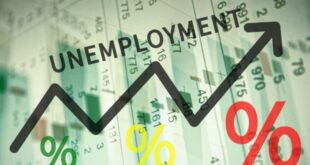The Inland Empire’s purchasing manager’s index took a major drop during July, falling below 50 for the first time since December.
The index fell to 46.5 last month, down nearly eight points from June’s 54.4, according to data released Sunday evening by the Institute of Applied Research and Policy Analysis at Cal State San Bernardino.
Any index below 50 means the region’s manufacturing sector is contracting, while 50 or above means it’s expanding. Because it takes three consecutive months in either direction to establish a trend, no one at the institute is panicking yet, said Barbara Sirotnik, director of the institute and one of the index’s co-authors.
Instead, Sirotnik is attributing the drop to seasonal factors, noting that the index has experienced similar summer declines before but has always bounced back.
“My first reaction when I saw the numbers was ‘oh my God,’ but when I took a closer look at them I could see there were seasonal factors involved,” Sirotnik said. “Historically, Inland Empire manufacturing has always been very vulnerable to seasonal issues. I’m not clear why, but it’s always been that way.”
The index probably will stay below 50 for another month before it gets back up above 50, Sirotnik predicted.
“I’m not nervous yet,” Sirotnik said. “If the [index] drops again next month, then I’ll get a little nervous, but not right now.”
While it’s true that one bad month is no reason to be overly concerned, there might have been factors behind the June-to-July drop besides seasonal ones, said Jay Prag, professor of economics and finance at the Drucker School of Management at Claremont Graduate University.
“I think there’s a lot of uncertainty over Brexit, over the elections coming up, over the GDP numbers that came out last week that showed the economy shrinking,” Prag said. “Once we get past the election we should get back to the level of growth we had before, which wasn’t that much but it was still growth.”
 IE Business Daily Business news for the Inland Empire.
IE Business Daily Business news for the Inland Empire.

